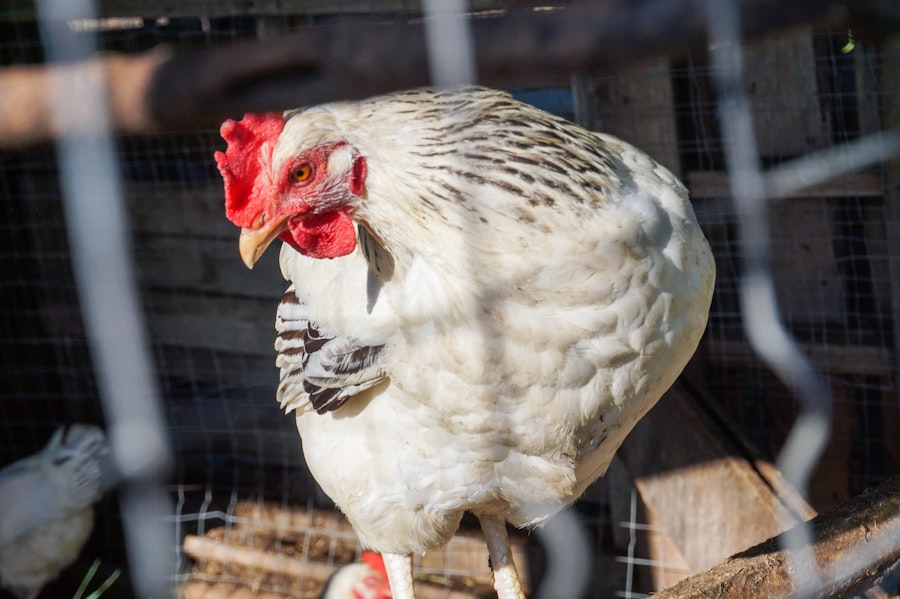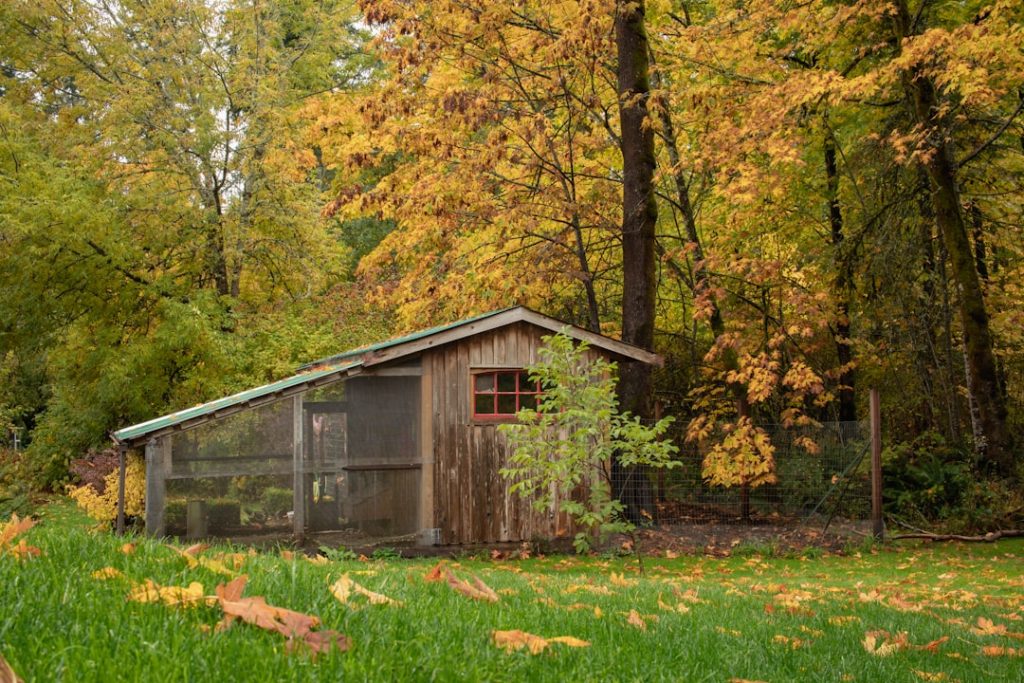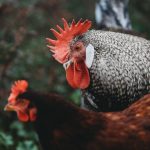Breeder pens are crucial in chicken farming, particularly for breeding and hatching operations. These enclosures provide a controlled setting for mating, egg-laying, and incubation, ensuring the well-being of breeding chickens and their offspring. Designed to replicate natural chicken behaviors while offering protection from predators and weather, breeder pens enable farmers to efficiently manage breeding, monitor flock health, and optimize egg and chick production.
These pens are instrumental in maintaining genetic diversity and flock health. By facilitating controlled breeding in a dedicated environment, farmers can prevent inbreeding and genetic issues, resulting in more robust offspring. Breeder pens also allow for precise tracking of individual chicken lineages and performance, informing decisions on breeding selection and culling.
This management tool is essential for sustainable chicken breeding, providing a safe space for natural reproductive behaviors while enabling farmers to improve their flocks’ genetic quality.
Table of Contents
- 1 Types of breeder pens available for chicken farming
- 2 Factors to consider when choosing breeder pens for chickens
- 3 Setting up and maintaining breeder pens for optimal chicken breeding
- 4 Benefits of using breeder pens for chicken breeding
- 5 Common challenges and solutions when using breeder pens for chickens
- 6 Best practices for managing breeder pens and maximizing chicken breeding success
- 7 FAQs
Key Takeaways
- Breeder pens are crucial for maintaining the health and productivity of chicken flocks
- Common types of breeder pens include colony cages, individual cages, and floor pens
- Factors to consider when choosing breeder pens include size, ventilation, and ease of cleaning
- Setting up and maintaining breeder pens requires regular cleaning, proper ventilation, and monitoring of chicken health
- Using breeder pens can lead to improved breeding success, better egg production, and healthier chicks
Types of breeder pens available for chicken farming
Individual Breeding Pens
One common type of breeder pen is the individual breeding pen, which consists of separate enclosures for each breeding pair. These pens offer precise control over mating and egg collection, as well as easy monitoring of individual birds’ behavior and reproductive performance.
Colony Breeding Pens
Another type of breeder pen is the colony breeding pen, which houses multiple breeding pairs in a larger communal space. Colony pens mimic the natural social dynamics of chickens and can be beneficial for certain breeds that thrive in group settings. However, they require careful management to prevent aggression and ensure that all breeding pairs have equal access to resources.
Specialized Breeder Pens
In addition to individual and colony pens, there are also specialized breeder pens designed for specific purposes, such as egg collection or artificial insemination. These pens may include features such as nesting boxes, roosting perches, and removable dividers to facilitate egg gathering and ensure successful fertilization. Some breeder pens are also equipped with climate control systems to maintain optimal temperature and humidity levels for egg incubation.
Factors to consider when choosing breeder pens for chickens

When choosing breeder pens for chickens, there are several important factors to consider to ensure that the pens meet the specific needs of the breeding operation and the welfare of the chickens. First and foremost, the size and layout of the pens should provide ample space for the breeding chickens to move, mate, and nest comfortably. Overcrowding can lead to stress, aggression, and reduced reproductive success, so it’s essential to provide enough room for each bird to exhibit natural behaviors without competition or conflict.
The materials used in constructing breeder pens are also crucial, as they should be durable, easy to clean, and resistant to corrosion or damage from the chickens. Additionally, the pens should be designed to facilitate easy access for egg collection, cleaning, and monitoring of the breeding chickens. Consideration should also be given to environmental factors such as ventilation, lighting, and temperature control to ensure that the breeding pens provide a healthy and comfortable environment for the chickens year-round.
Finally, it’s important to choose breeder pens that are compatible with the specific breed and behavior of the chickens being bred, as different breeds may have unique requirements for nesting, roosting, and social interaction.
Setting up and maintaining breeder pens for optimal chicken breeding
Setting up and maintaining breeder pens for optimal chicken breeding requires careful planning, attention to detail, and regular maintenance to ensure the health and productivity of the breeding chickens. When setting up breeder pens, it’s important to consider the placement of nesting boxes, roosting perches, feeders, and waterers to encourage natural behaviors and minimize competition among the breeding pairs. The pens should also be equipped with appropriate bedding material to provide a comfortable and hygienic nesting environment for the hens.
Regular cleaning and disinfection of breeder pens are essential to prevent the spread of disease and maintain a healthy environment for the breeding chickens. This includes removing soiled bedding, sanitizing nesting boxes, and regularly cleaning feeders and waterers to prevent bacterial contamination. Additionally, monitoring the condition of the pens for signs of wear or damage is important to ensure that they remain secure and functional for the breeding chickens.
Maintaining optimal environmental conditions within breeder pens is also crucial for successful chicken breeding. This may involve regulating temperature and humidity levels, providing adequate ventilation, and ensuring that lighting conditions mimic natural daylight patterns. Regular monitoring of these environmental factors can help identify any issues that may affect the health or reproductive performance of the breeding chickens.
Benefits of using breeder pens for chicken breeding
There are numerous benefits to using breeder pens for chicken breeding, both for the welfare of the chickens and the overall success of the breeding operation. Breeder pens provide a controlled environment for mating, egg laying, and incubation, which can lead to higher fertility rates and increased hatchability of eggs. By monitoring the behavior and reproductive performance of individual breeding chickens within these pens, farmers can make informed decisions about which birds to breed in order to improve the genetic quality of their flock.
Breeder pens also play a crucial role in preventing inbreeding and maintaining genetic diversity within a chicken flock. By carefully selecting breeding pairs and managing their interactions within controlled environments, farmers can minimize the risk of genetic abnormalities and produce healthier offspring with greater resilience to disease and environmental stressors. In addition to these genetic benefits, breeder pens also provide a safe and secure environment for breeding chickens, protecting them from predators and adverse weather conditions.
This can reduce stress and improve overall welfare, leading to healthier and more productive breeding stock. Overall, using breeder pens for chicken breeding can lead to higher reproductive success rates, improved genetic diversity, and better overall welfare for the breeding chickens.
Common challenges and solutions when using breeder pens for chickens

Aggression Management
Some breeds of chickens may exhibit territorial or aggressive behaviors when housed in close proximity with other birds. To address this challenge, farmers can provide ample space within colony pens, as well as multiple feeding and watering stations to reduce competition among breeding pairs.
Environmental Conditions
Maintaining optimal environmental conditions within breeder pens is another challenge, particularly during extreme weather conditions. To address this challenge, farmers can install climate control systems within the pens to regulate temperature and humidity levels, as well as provide adequate ventilation to prevent heat stress or respiratory issues in the breeding chickens.
Disease Management and Prevention
Disease management is another common challenge when using breeder pens for chicken breeding. To prevent the spread of disease within these facilities, farmers should implement strict biosecurity measures, including regular cleaning and disinfection of the pens, as well as monitoring the health of the breeding stock for signs of illness. Additionally, separating sick or injured birds from the rest of the flock can help prevent disease transmission within breeder pens.
Best practices for managing breeder pens and maximizing chicken breeding success
To maximize chicken breeding success while using breeder pens, there are several best practices that farmers can implement to ensure optimal reproductive performance and overall welfare of their breeding stock. First and foremost, providing ample space within breeder pens is essential to reduce stress and competition among breeding pairs. This includes ensuring that there are enough nesting boxes, roosting perches, feeding stations, and waterers to accommodate all birds within the pen.
Regular monitoring of individual breeding chickens within these pens is also important to track their reproductive performance and overall health. This may involve keeping detailed records of egg production, fertility rates, hatchability, and any signs of illness or injury among the breeding stock. By closely monitoring these factors, farmers can make informed decisions about which birds to breed in order to improve genetic quality and overall productivity.
Implementing strict biosecurity measures within breeder pens is crucial to prevent disease transmission among the breeding stock. This includes regular cleaning and disinfection of the pens, as well as limiting access to outside visitors or equipment that may introduce pathogens into the facility. Overall, by following these best practices for managing breeder pens, farmers can maximize their chicken breeding success while ensuring the health and welfare of their breeding stock.
If you’re interested in learning more about the housing needs of poultry, you may want to check out this article on whether turkeys need a coop. It provides valuable information on the housing requirements for turkeys and how to best accommodate their needs.
FAQs
What are breeder pens for chickens?
Breeder pens for chickens are specially designed enclosures or cages used to house and breed chickens for the purpose of producing fertile eggs for hatching.
What are the benefits of using breeder pens for chickens?
Breeder pens provide a controlled environment for breeding, which can help to increase the success rate of hatching fertile eggs. They also allow for easy monitoring of the breeding process and can help to protect the chickens from predators and other potential threats.
What features should I look for in breeder pens for chickens?
When choosing breeder pens for chickens, it’s important to consider factors such as size, ventilation, ease of cleaning, and durability. The pens should also provide enough space for the chickens to move around comfortably and engage in natural breeding behaviors.
How should breeder pens for chickens be set up?
Breeder pens for chickens should be set up in a quiet and secure area, away from other chickens and potential disturbances. The pens should be equipped with nesting boxes, perches, and feeders to provide a comfortable and conducive environment for breeding.
Are there different types of breeder pens for chickens?
Yes, there are various types of breeder pens for chickens, including wire cages, wooden enclosures, and portable pens. The type of pen chosen will depend on factors such as the number of chickens being bred, the available space, and the specific breeding goals.
Meet Walter, the feathered-friend fanatic of Florida! Nestled in the sunshine state, Walter struts through life with his feathered companions, clucking his way to happiness. With a coop that’s fancier than a five-star hotel, he’s the Don Juan of the chicken world. When he’s not teaching his hens to do the cha-cha, you’ll find him in a heated debate with his prized rooster, Sir Clucks-a-Lot. Walter’s poultry passion is no yolk; he’s the sunny-side-up guy you never knew you needed in your flock of friends!







